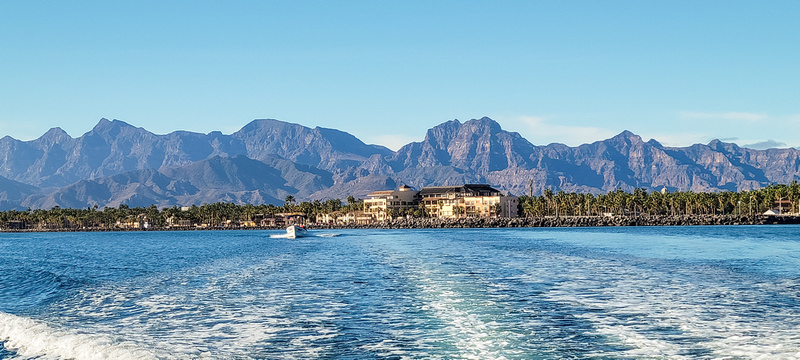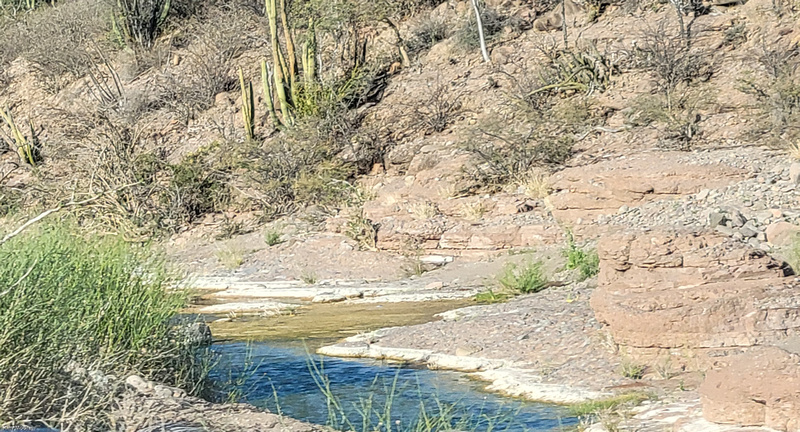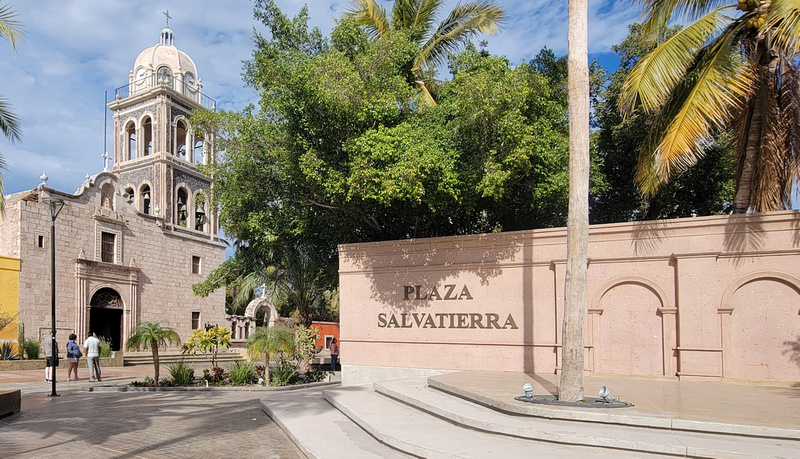Baja Sur - Travels Part 3: Mountains, Sea of Cortez, and Loreto and the Estuary
This is Part 3 of my trip to Baja. In Part 1 I covered an overview, trip organization and people, and field arts. In Part 2 I focused on Magdalena Bay, Gray Whales, and Whale Camp. This Part 3 will cover Isla Coronado, The Mountains, and Loreto and the Estuary.
After three days of exploring the sand dunes, mangroves, and Gray Whales of Magdalena Bay, we went back to Loreto for day trips to Isla Coronado, San Javier and the mountains in search of Pictographs, and finally short walks on the beach and mudflats at the Estuary in Loreto.
Isla Coronado
I loved seeing the whales at Magdalena Bay, but I think the Sea of Cortez side of the peninsula is far more interesting and beautiful. The geology, the color of the water, the birds, and the sea life are phenomenal.
We took boats out of Loreto and went to Isla Coronado. The intent was to snorkel and use specially made journals to document sea lions while under water. It sounded like fun on paper, however, the weather and water were cold and the sea lions were big. I am amazed at the adventurous souls who did it. I stayed on the boat along with a few other (scared or sane?) people. I documented the experience with my camera and did some field sketches. I delighted in the sea birds on guano drenched ledges on the rocks. Thank you, Blue-footed Booby and Yellow-footed Gull, for names that accurately describe your feet.
After the wet and shivering people got back on the boats, we went around the island to a beach for lunch and exploration. There was a sandy beach, some tidepools, and a boardwalk inland to see the habitat. I started photographing butterflies and was surprised to find Wandering Skippers and Ceraunus Blues on the same plants near the shore. I see Wandering Skippers in our local wetlands. I have seen the Ceraunus Blues inland in the mountains in more chaparral and desert areas. On this little island the desert meets the shore. A sea star and a chuckwalla were not far apart. Some of these were species and sub-species specific to the islands.
Leave me here for a week.
Watch below or Click on this link to see photos and descriptions: https://kimssight.zenfolio.com/baja_2023_isla_coronado

Mountains
I was surprised by the amount of water in the washes. We drove through several stream-crossings to get there. I was also surprised by official no passing signs along a narrow dirt lane. The driver said the road was supposed to be constructed as a pass from one side of the mountain to the other. The signs were installed, but the roadwork was never completed. I was surprised by the number of vehicles we encountered on our walk.
I was familiar with the birds we saw. We have them in our area too, but did I did see a special Xantus’s Hummingbird, a lifer for me. Here the reptiles, butterflies, other insects, and plants looked familiar but different. We have similar species, so I could identify the families, but not the species. I had to look those up, and also get some help from iNaturalist to identify those when I got home.
I want to spend more time in the mountains.
Watch below or Click on this link to see photos and descriptions: https://kimssight.zenfolio.com/baja_2023_mountains

Loreto Beach and Estuary
The hotel we moved to for the last night was on the beach and next to the estuary. When the tide was out, there were large mudflats. I enjoyed a few short walks on them accompanied by a few others. Although there weren’t as many birds as I expected in terms of numbers, the variety was very good. Some special birds included Wilson’s Plover, White Ibis, and Little Blue Heron. I think I have burned plover differentiation into my brain. There were Snowy, Wilson’s, Black Bellied, and one Semipalmated at far distances in the mud. It was difficult to pick them out. A scope and better lighting would have helped. Any normal person would have overlooked them, but I was determined to find my first Wilson’s Plover. Once I learned the subtle differences, they were easier to pick out. I saw a Yellow-footed Gull try to grab an octopus which was wrapped around the beak of a Great Blue Heron that was flying to get a way. A little less dramatic, it was also interesting to look for shells and tracks in the mud. I doubt I’ll be able to determine which bird made which track, but I paid more attention after our tracking lesson. I did see a snail track and the snail that made it.
Watch below or Click on this link to see photos and descriptions: https://kimssight.zenfolio.com/baja_2023_loreto

Follow me on Facebook: https://www.facebook.com/KimMooreNaturalist/